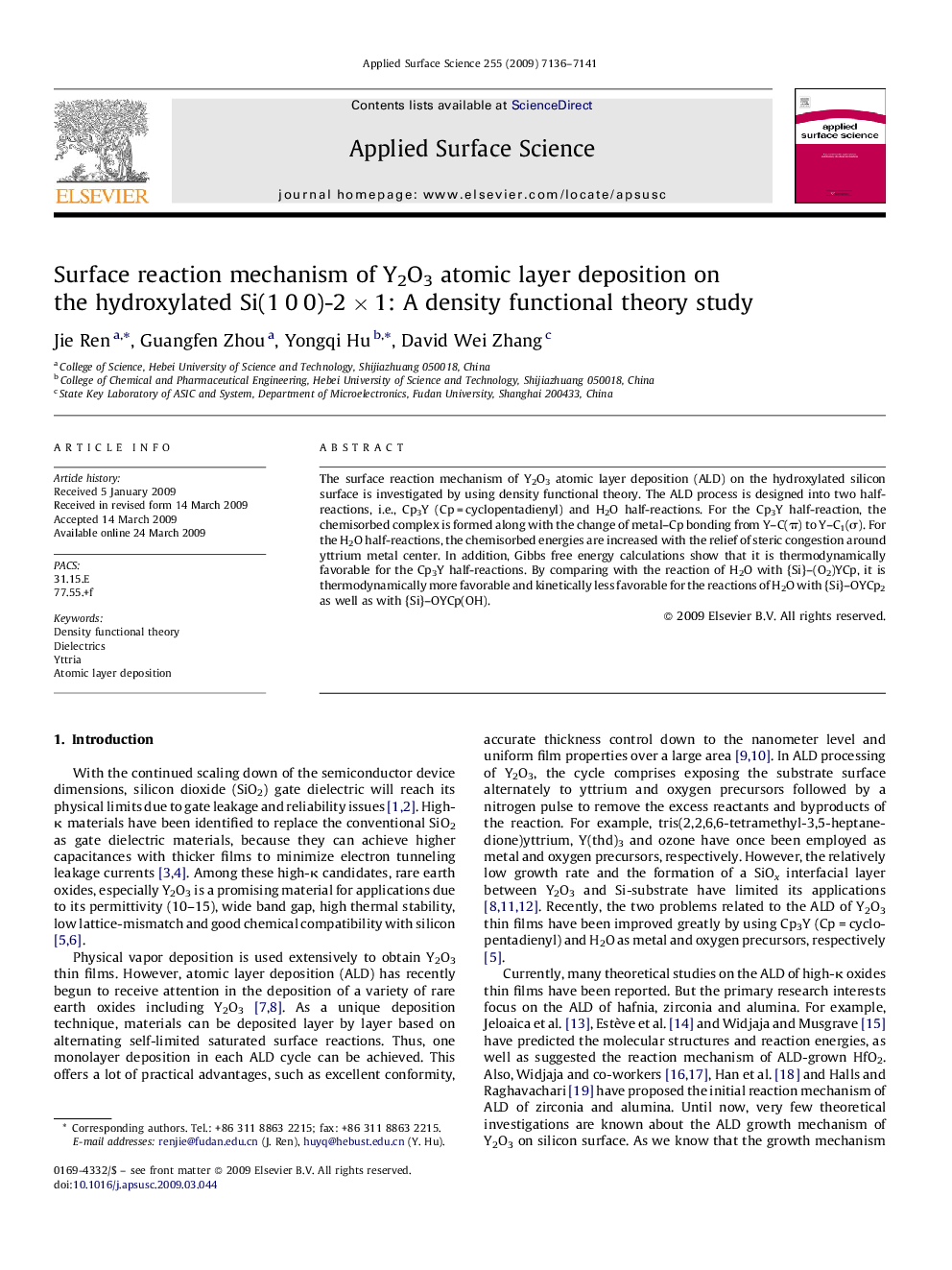| Article ID | Journal | Published Year | Pages | File Type |
|---|---|---|---|---|
| 5367029 | Applied Surface Science | 2009 | 6 Pages |
The surface reaction mechanism of Y2O3 atomic layer deposition (ALD) on the hydroxylated silicon surface is investigated by using density functional theory. The ALD process is designed into two half-reactions, i.e., Cp3Y (Cp = cyclopentadienyl) and H2O half-reactions. For the Cp3Y half-reaction, the chemisorbed complex is formed along with the change of metal-Cp bonding from Y-C(Ï) to Y-C1(Ï). For the H2O half-reactions, the chemisorbed energies are increased with the relief of steric congestion around yttrium metal center. In addition, Gibbs free energy calculations show that it is thermodynamically favorable for the Cp3Y half-reactions. By comparing with the reaction of H2O with {Si}-(O2)YCp, it is thermodynamically more favorable and kinetically less favorable for the reactions of H2O with {Si}-OYCp2 as well as with {Si}-OYCp(OH).
